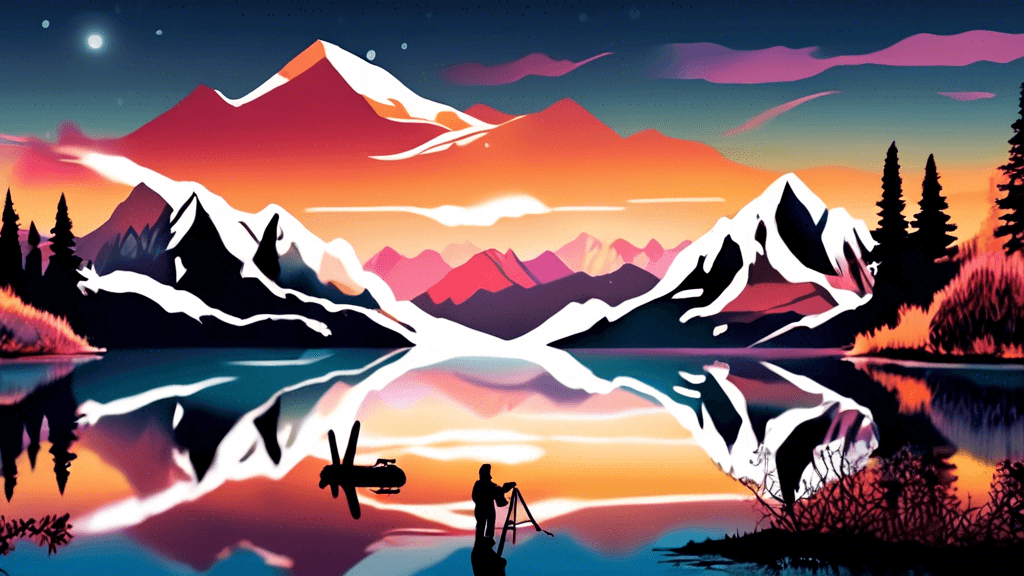
Capturing the Great Outdoors: The Art of Nature and Landscape Photography
Share
Discovering the Heart and Soul of Nature Through Photography
Have you ever seen a photograph of a landscape so stunning it almost felt unreal? Nature and landscape photography is not merely about capturing serene views—it’s about translating the unspoken essence of the earth into a language understood universally through visuals. But what really goes into capturing images that make nature leap out of a photograph?
The Fundamental Techniques in Nature and Landscape Photography
Understanding and mastering the basic techniques are paramount in any field of photography, especially in nature and landscape where every element matters. Let's delve into these techniques:
Lighting: The Lifeforce of Your Photographs
Arguably the most crucial aspect, lighting in outdoor photography is often unpredictable and varies dramatically depending on the time of day and weather conditions. The 'golden hours'—just after sunrise and just before sunset—offer soft, diffused light that enhances textures and colors. In contrast, the 'blue hour' provides a cool tone that can bring a mystical vibe to your scenes.
Composition: Artful Arrangement of Elements
Composition in landscape photography often follows the rule of thirds, where the scene is divided into nine equal segments. Placing key elements along these lines or at their intersections creates a balanced, engaging view. However, breaking these rules creatively can sometimes lead to spectacular results.
Equipment: Choosing the Right Tools
While the photographer's skill is essential, having the right tools can empower you greatly. Here are essential pieces of equipment for every nature photographer:
- Camera: A DSLR or mirrorless camera typically offers better control over settings and higher image quality.
- Lenses: Wide-angle lenses are preferred for expansive landscapes, while telephoto lenses are beneficial for capturing distant details.
- Filters: Polarizing filters can reduce reflections and enhance colors, and neutral density filters allow for longer exposure times.
- TriPod: Essential for stabilizing the camera, especially in low light conditions or when using slow shutter speeds.
Timing: More Than Just Luck
The saying timing is everything holds particularly true in nature photography. Capturing the perfect moment can sometimes mean revisiting the same spot multiple times to understand how the light and conditions interact with the landscape.
The Power of Observation
A successful nature photographer is often an expert observer. Understanding the rhythm of natural environments allows photographers to anticipate moments, be it animals in action or a sudden break in the clouds that lights up the valley below. Dr. Jane Goodall, renowned primatologist and anthropologist, once mentioned, Only if we understand, will we care. Only if we care will we help.
Observation not only about understanding what is happening around but why it is happening, which gives depth to the photography, transforming simple images into stories.
Incorporating Environmental Conservation into Photography
Nature photographers have a unique position as effective advocates for environmental conservation. Capturing the beauty and fragility of nature can raise awareness and drive action to preserve these landscapes. Celebrated photographer Ansel Adams used his breathtaking images of American wilderness to promote the idea of national parks and environmental conservation.
When aiming to photograph nature, consider these elements:
- Impact-Focused Photography: Frame your shots to highlight the beauty and also the challenges faced by natural settings. This could involve documenting impacts of climate change or human interference.
- Ethical Practices: Always respect wildlife and natural habitats. Be mindful not to cause stress or harm to the environment. Leaving no trace should be your goal.
Connecting with Your Viewer
The ultimate goal of your photography should be to connect with the viewer, eliciting feelings and stirring actions. Each image should carry a message or evoke an emotion that resonates with the audience, drawing them deeper into a silent yet potent dialogue with nature. Remember, your photographs can serve as a window to unseen worlds, telling tales of beauty, decay, resurgence, and balance.
Are you ready to wield your camera as a tool to unveil the majesty of the outdoors? Whether beginners eager to explore their local nature reserve, or skilled photographers seeking to fine-tune their craft, there's always more to learn, more to see, and more to protect in the enchanting realm of nature and landscape photography. Grab your gear, and let nature's moments inspire you.
In nature, light creates color. In the picture, color creates light. – Quoted by famous Canadian photographer, Freeman Patterson, this sentiment echoes the magic that colors and light play in nature photography. Venture out and let the colors of the natural world paint your canvases, guiding viewers to see what you see, feel what you feel, and hopefully, care deeply about this planet we all home.
Ready to capture the spellbinding beauty of our planet? Start your journey today and help showcase the wonders of the natural world through your lens!





